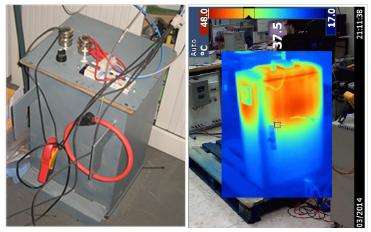New system to optimize public lighting power consumption

In order to meet the efficiency requirements of the latest public lighting regulations, researchers from the School of Industrial Engineers of Universidad Politécnica de Madrid (UPM), in collaboration with the Universidad Pontificia Comillas, have designed an energy regulation system based on the combination of diverse electromagnetic elements. This system is able to efficiently reduce the luminous flux of lamps by reducing the voltage.
According to the researchers, this new system is strong and efficient and needs hardly any maintenance. Its size, weight and cost are lower than the systems used today based on power electronics. The system design was patented and licensed to a Spanish transformer manufacturing company.
Energy efficiency is a priority in a society that increases energy demand because of its technological advances. Street lighting represents the 50% of power consumption of any city council. Therefore, the challenge to optimize energy consumption of public lighting systems is a priority. This was indeed the challenge of a team of researchers led by Carlos Platero of UPM. They designed a regulation system of luminous flux to achieve an energy saving and low cost lighting systems thanks to their optimization.
The new regulation system of light flow is based on the usage of electromagnetic components instead of the complex and expensive electric equipments used today. Thanks to its robustness, the system can face extreme weather conditions apart from having an excellent behavior to control short-circuit, electric shock, and surges. The maintenance requirements are almost nonexistent. A single device allows the lamps control of a same line between two voltage levels efficiently decreasing its consumption without accelerating its aging.
The production of the new device is inexpensive, easy to install and it does not require a very skilled labor. This patented invention was licensed to a Spanish transformer manufacturing company.
Provided by Universidad Politécnica de Madrid



















